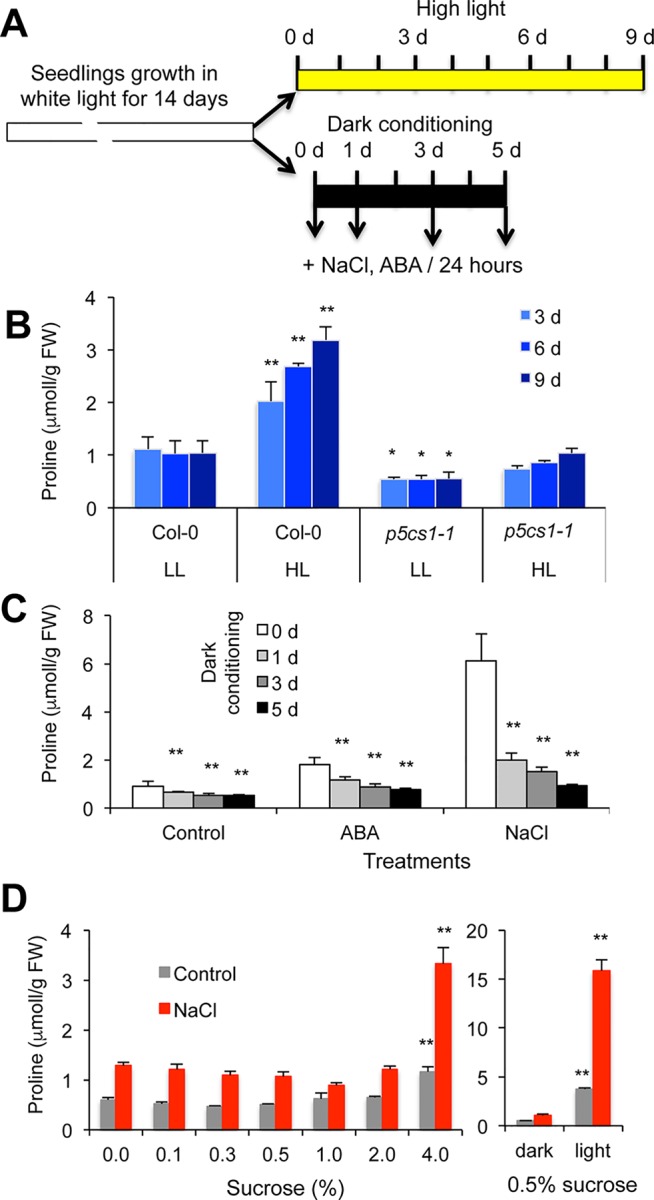Figure 1.

Light-dependent proline accumulation in wild-type Arabidopsis plants. (A) Experimental design. (B) Proline accumulation in plants after high-intensity light treatment. Plants were grown in vitro under standard conditions for 14 days, then transferred to high-intensity light (white light, 550 μE m−2 s−1, 8/16 h light/dark cycle) for up to 9 days. LL: low light condition, HL: high-intensity light. (C) Proline accumulation in dark-conditioned plants. Fourteen-day-old plantlets were transferred to dark for 1, 3, and 5 days, then subjected to salt (150 mM NaCl) or ABA (10 µM ABA) treatment in darkness for 24 h. 0 d, 1 d, 3 d, and 5 d indicates the number of days in dark. (D) Effect of different sugar concentrations on proline levels in dark-conditioned plants. Fourteen-day-old plants were transferred to media with different sucrose concentrations [0 to 4% (W/V)] and placed to dark for 5 days. Plants were subsequently treated with or without 150 mM NaCl and the same sugar concentrations, for 48 h. The right diagram shows proline accumulation in dark-conditioned and light-grown plants cultured on standard culture medium containing 0.5% (W/V) sucrose. Error bars indicate SD (N = 5). Significant differences compared to Col-0 plants in low light conditions (B), 0 day of dark treatment (C) or plants cultured on standard 0.5% (W/V) sucrose (D) are shown: * p < 0.05, ** p < 0.01, (one-way ANOVA, Tukey test).
